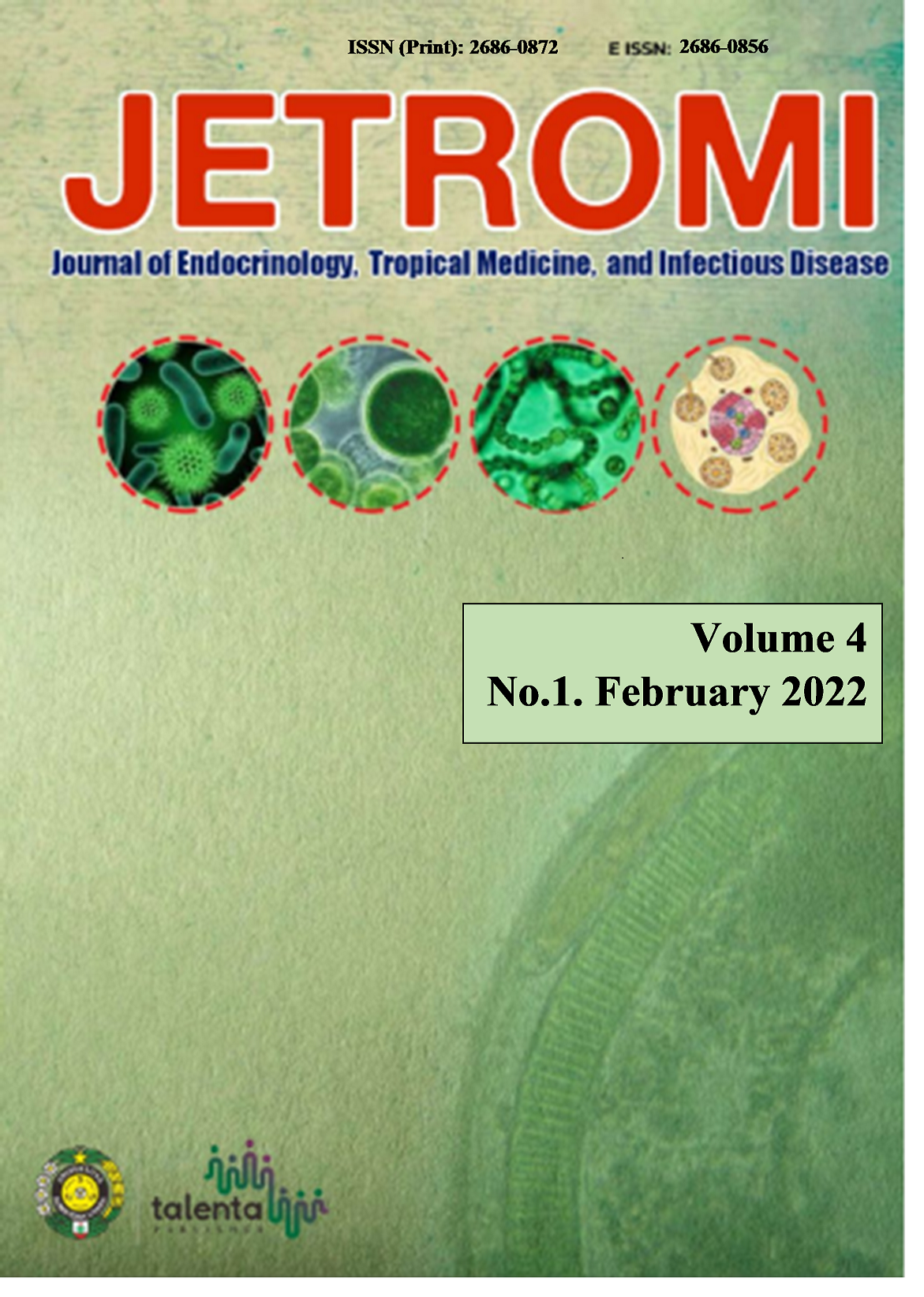The Etiologies of Pediatric Acute Respiratory Distress Syndrome (PARDS) in Patients Treated at The PICU of Haji Adam Malik Hospital Medan in 2017 – 2020
DOI:
https://doi.org/10.32734/jetromi.v4i1.8016Keywords:
etiologies; PARDS; pediatric; PICU; respiratory distressAbstract
Background. Pediatric Acute Respiratory Distress Syndrome (PARDS) is considered to occur due to direct lung injury and indirect lung injury. The research aims to describe the causes of PARDS in patients treated at the Pediatric Intensive Care Unit (PICU) of Haji Adam Malik Hospital Medan in 2017-2020.
Method. This type of research is a retrospective descriptive study with a cross-sectional study design uses secondary data in the form of medical records. The population of this study were all PICU patients aged 1 month – 18 years at Haji Adam Malik Hospital Medan in 2017-2020 using consecutive sampling technique.
Results. Of the 100 PICU patients, there were 55 male patients with the most age group was <12 months. The most common mode of ventilation used is 80 invasive mechanical ventilation and duration of ventilation used has a mean value of 17.72 days. A mean value of Length of stay (LOS) patient was 25.47 days. Based on the Oxygenation Index (OI), of the 80 patients with invasive mechanical ventilation, most patients were 57 at risk PARDS, meanwhile, based on Oxygen Saturation Index (OSI) categories, of the 20 patients with non-invasive mechanical ventilation, most patients were 15 at risk PARDS. Most caused by indirect lung injury, namely 51 (51%), direct lung injury 47 (47%), and due to complications of using a ventilator as much as 2 (2%).
Conclusion. The most common direct lung injury factor is the primary pulmonary infection, aspiration, trauma, and other factors. The most common indirect lung injury factor is sepsis, then central nervous system (CNS) disorders, postoperatively, and other factors.
Downloads
Downloads
Published
Issue
Section
License
Copyright (c) 2022 Journal of Endocrinology, Tropical Medicine, and Infectious Disease (JETROMI)

This work is licensed under a Creative Commons Attribution-NonCommercial-ShareAlike 4.0 International License.
The Authors submitting a manuscript do so on the understanding that if accepted for publication, copyright of the article shall be assigned to Journal of Endocrinology, Tropical Medicine and Infectious Diseases (JETROMI).
Copyright encompasses exclusive rights to reproduce and deliver the article in all form and media. The reproduction of any part of this journal, its storage in databases and its transmission by any form or media, will be allowed only with a written permission from Journal of Endocrinology, Tropical Medicine and Infectious Diseases (JETROMI).








